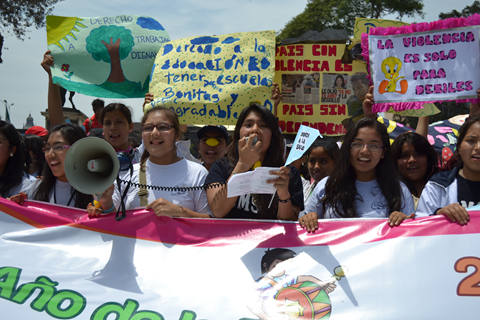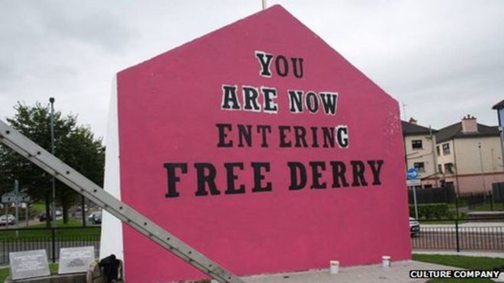Cross-Sector Mobilization for Social Change
The Bernard van Leer Foundation has a solid reputation in the area of early childhood education. It is known for financing early education models, publishing articles, and supporting research on early childhood development. It has been a respected figure in this field for over 60 years, operating in more than 40 countries. In 2009, the board and staff undertook a deep review to assess the relationship between activities and mission. The review helped us realize that given our positive reputation, we could go beyond the provision of early education to individual children and expand our work to create opportunities to solidify the rights of young children. As the Executive Director, I decided in collaboration with the board that to reach our full capacity as a foundation, we needed to look critically at how successfully we were achieving our mission.
At this point the Bernard van Leer Foundation essentially moved from being a charitable organization to becoming a social change organization. We did not abandon our funding of early education, but we shifted our focus to trying to convince governments and the private sector to invest in young children. Critically, we also needed to understand what, apart from early education, was keeping young children from developing to their full potential. Our investigations found that there was one major factor that determines a child’s potential to learn and grow that was not being adequately addressed by the markets, governments, or foundations: violence.
To have any significant impact in terms of reducing violence against children, we needed to work in three different areas: shifting social norms towards less acceptance of violence, spreading evidence-based policies to prevent violence, and increasing provision of preventive and responsive services. We decided to address the issue as a global problem, not one that exists only in developing countries. We wanted to use our global presence to raise awareness of the scope of this problem across all corners of the world.
 The Bernard Van Leer Foundation supported 11 separate campaigns to bring this hidden topic into the public eye and shift social norms. We funded these campaigns and became a champion of the issue ourselves. We used our own publications to reach early childhood advocates and share research findings, funded newspaper articles and national television programs in the Netherlands, and had our staff speak in the Netherlands and across the world to raise awareness about childhood violence. The campaigns reached close to three million people and involved a wide range of messengers such as fathers, artists, church leaders, politicians, police, and social workers. Incorporating diverse, international voices into this effort was essential to the success and scale of the project.
The Bernard Van Leer Foundation supported 11 separate campaigns to bring this hidden topic into the public eye and shift social norms. We funded these campaigns and became a champion of the issue ourselves. We used our own publications to reach early childhood advocates and share research findings, funded newspaper articles and national television programs in the Netherlands, and had our staff speak in the Netherlands and across the world to raise awareness about childhood violence. The campaigns reached close to three million people and involved a wide range of messengers such as fathers, artists, church leaders, politicians, police, and social workers. Incorporating diverse, international voices into this effort was essential to the success and scale of the project.
Most powerfully, children themselves spoke on the need to reduce violence. Having a diverse group of messengers has proved important to effectively mobilize powerful groups in society, but this pales in comparison to the long-term effect of children mobilizing for their own rights. In both Peru and India, the impact of children mobilizing has been evident, resulting in a law against corporal punishment in Peru and infrastructure changes in Indian slums to make them safer for children.
However, campaigns are only one vehicle to create change. If you are aiming for systemic change, campaigning must be combined with other approaches such as direct engagement with policymakers or addressing basic social needs. For example, the foundation’s partner, Children of Prisoners Europe (COPE), successfully convinced the European Union to put children of prisoners on the official list of vulnerable children, giving them access to more services and support. A coalition of Turkish research partners launched the results of a national survey on family violence, helping to start a productive dialogue with the Ministry of Family and Social Policies.
The Bernard van Leer Foundation’s success in raising global concern over violence against children stemmed from our willingness to look critically at how the foundation worked in pursuit of its mission, and as a result, to move from being a service-driven funder to become a champion of children’s rights. Additionally, incorporating diverse, international voices into this effort was essential to the success and scale of the project.
The Working Group on Philanthropy for Social Justice and Peace and GrantCraft, a service of Foundation Center, are releasing a series of 11 blog posts authored by grantmakers around the world. The posts are derived from the recently published Effective Philanthropy: Another Take, a collection of stories describing a philanthropic intervention against some form of injustice (socioeconomic and/or political) at a local, national or global scale. Each story addresses key questions grantmakers wrestle with in order to effect systemic social change, and the blog posts in this series highlight certain details that feed into the bigger story. Through this series, the partners hope to raise awareness of some of the most effective examples from philanthropy in tackling injustice and achieving lasting structural change. By sharing knowledge in philanthropy and being willing to learn from one another’s experiences and perspectives, we can improve our practice together.
This is the fourth post in this series, which will roll out over the next three months; it focuses on one funder's approach to addressing the global, systemic issue of violence against children.



